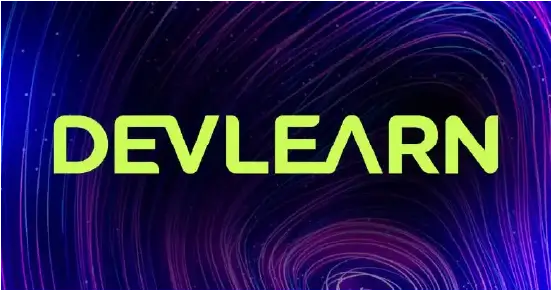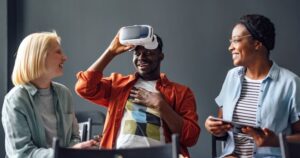Three laws and one markettrend cycle are about to rock your world. These three laws and the cycledescribe how virtual reality (VR) and augmented reality (AR, such as Magic Leapor the Microsoft Hololens glasses) are experiencing rapid exponential growthand will very soon dramatically change the way weall interact, work, learn, and live.
Moore’s Law
The first law that’s influencing therapid progress of VR and AR technology, Moore’s Law, states that our experiencesuggests that the number of computer transistors that can be packed into asquare inch of integrated circuit doubles every 1.5 years. This means that (sofar) we continually get smaller, faster, and cheaper processing power forcomputers, including VR and AR devices. The Moore’s Law S-curve represents along period of imperceptible change, followed by exponential growth for aperiod, and finally a leveling off period when some physical limit is reached(Figure 1).
Figure 1: Moore’s Law, Single Technology,Linear Scale
Kurzweil’s Law ofAccelerating Returns
The second law impacting the rise ofVR and AR is Kurzweil’s Law (also known as The Law of Accelerating Returns),which demonstrates that the rate of technological acceleration is itselfaccelerating. In other words, computers are speeding up, shrinking in size, andincreasing in power more rapidly every year. If it now takes one to two yearsto double a computer’s power, size, and speed, it’ll only take six months inthe future. In addition to microchip size and cost, processors, bandwidth,screens, software, hardware, batteries, and dozens of other relevant factors allimprove by doubling or halving every one to two years.
All of these individual technologyS-curves can be stacked on top of one another, effectively adding theirindividual impacts and accelerating the evolution of computers such as VR andAR. Further, when the growth of any given factor reaches a physical limit (i.e.,the flattened top of the S-curve), a new, more advanced technology tends toreplace it right away, starting a whole new period of exponential growth.Finally, these new compounding advances tend to arrive more quickly over time,accelerating the whole process even more.
Thus, technology actually progressesnot as a single S-curve on a linear graph, but rather as a rising paraboliccurve on a logarithmic graph(Figure 2).
Figure 2: Kurzweil’s Law ofAccelerating Returns
Put another way, the total of alltechnological change we’ll experience throughout the twenty-first century does notequate to 100 years of change at our current rate of progress, but rather20,000 years. Think of all the new technologies we experience in an entiredecade right now. That much progress will occur every few days, or even everyfew hours by the end of this century. While it’s almost impossible to fathomwhat 20,000 years’ worth of rapid technological progress even means, we cansafely assume that the near future will look nothing like the present, and thefar future will be even wilder still.
Using the two previous laws, we canexpect VR headsets and AR glasses to get twice as powerful, fast, small, andcheap every couple of years, or perhaps even every six to twelve months, fromnow until forever. VR screen resolution, field of view (FOV), and sensorquality will also double every year or two. Haptic devices and 360 audio willrapidly improve. Hyper-advanced software capabilities will naturally followshortly behind all this progress in hardware (likely with the help ofprogramming created by artificial intelligence, which is on a similarly rapidevolution).
Metcalfe’s Law
The third law affecting VR’s and AR’sutility, Metcalfe’s Law, states that the number of unique connections in atelecommunications network is proportional to the square of the number of userson the network. If “n” represents the number of nodes (i.e., users) in anetwork, and “c” represents the number of unique connections within thatnetwork, then:
For example, two people withtelephones can only call each other, which is just one connection. Five peoplewith phones can make ten unique connections, that is, ten different callsbetween unique pairs of callers. Twelve can make 66 connections. And so on.
In other words, more users meansexponentially more connections and an exponentially more useful network (Figure3).
Figure 3: Metcalfe’s Law
VR headsets and AR glasses are, infact, powerful telecommunication devices, connecting users to other users.Upwards of 10 million VR headsets have already been sold worldwide. VR graphicscard manufacturer Nvidiapredicts that more than 50 million headsets will be sold by 2021, lessthan three years from today. The number of connections that can be made between50 million users is astronomically large, roughly 1.25 X 1015, ormore than a quadrillion unique connections. These numbers equate to a verypowerful network, one that will eventually rival, replace, or simply merge withcell phones, TVs, game consoles, and laptop computers.
All this means that VR headsets andAR glasses are close to reaching a tipping point where everyone has to have onein order to communicate with friends, go online, do work, go to school, buysomething, or do just about anything at all. We’ve experienced this kind ofshift before with the advent of personal computers in the 1980s, internetconnections in the 1990s, cell phones in the 2000s, and smart phones in the2010s. In each case, almost no one had one until seemingly one day just abouteveryone did, and the world was dramatically and indelibly changed for thebetter. The day we hit the gotta-have-it-and-use-it-all-day tipping point willlikely happen for VR headsets and AR glasses in the 2020s.
TheGartner Hype Cycle for Emerging Technologies
This brings us back to the cycle Imentioned at the beginning of the article. The Gartner Hype Cycle forEmerging Technologies describes the stages a newtechnology goes through from conception to maturity to widespread adoption (Figure4).
Figure4: TheGartner Hype Cycle
Virtual reality is just leaving the Troughof Disillusionment, and augmented reality is not far behind. We’re seeing earlyindications of this for both technologies. Investment capital is starting tocome back to the space. The popularity of books and movies like Ready PlayerOne and TV shows like Black Mirror demonstrate that regular peopleare getting excited for VR and AR. One guy even recently spent a month straightexistingalmost entirely in VR. He may be an early adopter, buthe’s shown that it’s already possible to live and work in VR.
So what does it all mean? What do we do withthese conclusions? I have two answers to that.
The scary answer is that the train isleaving, and we can’t afford to get left behind. We have to jump on and startcreating for and with VR and AR now … today. I mean literally today. Ourschools and companies must stay on this year’s bleeding edge of VR and AR inorder to stay relevant next year. We must learn to be VR/AR experts or we’llquickly become relics.
The inspiring answer is that it allmeans whatever we make it mean. It’s still very early for VR and AR, for a fewmore years anyway. We get to make up the rules as we go. We get to choose whatwe do with all this potent technology. We get to be a part of the movement,bringing diverse viewpoints and creating inclusive experiences. We get to buildpowerful tools for learning, working, and living, far beyond the wildestimaginings of today’s sci-fi.
The VR and AR development communitieshave realized this, and they’re collaborating in surprisingly supportive andfriendly ways to create amazing games and experiences. It’s easy to get in thegame. Find a meetup, attend a conference, complete a tutorial, and startcreating your own amazing experiences today.
Moore’s Law, Kurzweil’s Law,Metcalfe’s Law, and the Gartner Hype Cycle tell us we can do anything at allwith the future of VR and AR in the coming years. The possibilities areinfinite. I’m excited to see where these technologies take us and where we takethese technologies. I hope you are too!
Additionalresources
These five books provide deeper explanationsof the above concepts and glimpses of how various emerging technologies willshape the future of VR and AR. I recommend adding them to your reading list!
Kelly, Kevin. The Inevitable: Understanding the 12Technological Forces That Will Shape Our Future.Viking Press, 2016.
Kelly, Kevin. What Technology Wants.Viking Press, 2010.
Kurzweil, Ray. The Age of Spiritual Machines: When ComputersExceed Human Intelligence. Penguin Books, 2000.
Kurzweil, Ray. The Singularity Is Near: When Humans TranscendBiology. VikingPress, 2005.
Tegmark, Max. Life 3.0: Being Human in the Age of ArtificialIntelligence. Knopf, 2017.








